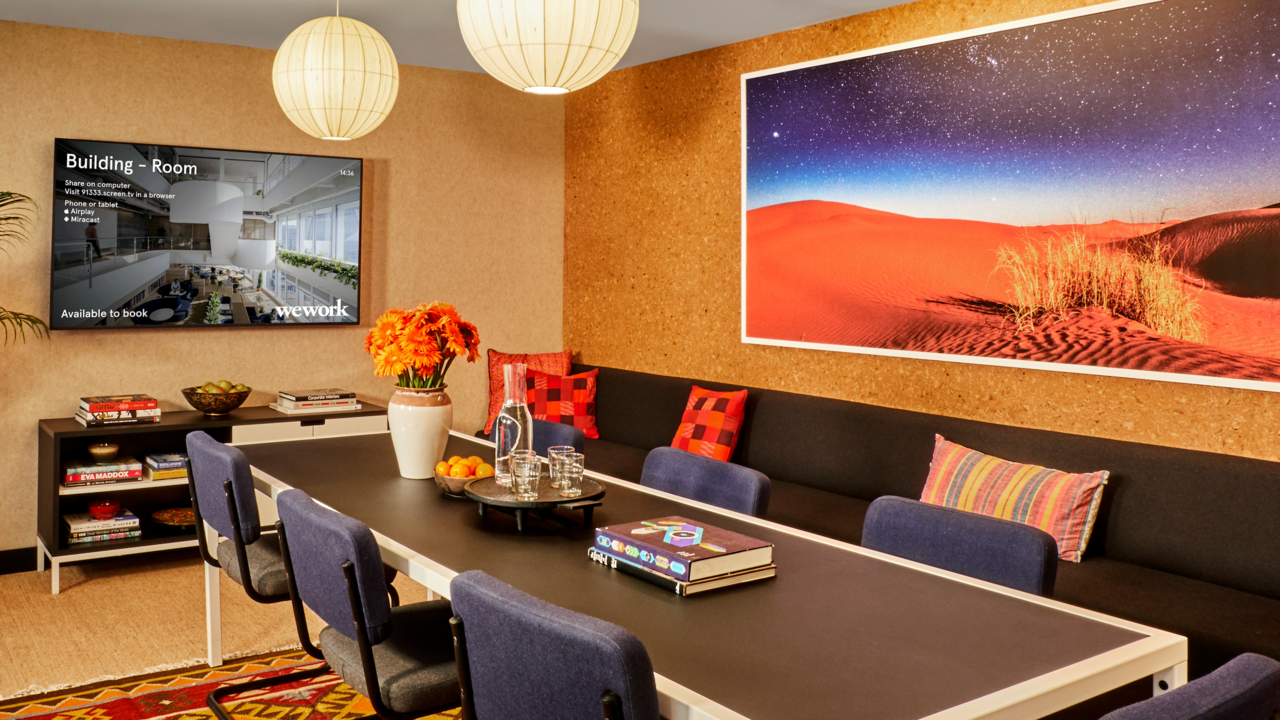
Wireless Screen Sharing, Digital Signage Solution Deployed At 500+ WeWork Locations
August 8, 2023 by Dave Haynes
Workplace has proven to be one of the most active and opportune vertical markets to chase for pure-play digital signage solutions and software firms, but they are confronted by the interesting challenge of seeing competing solutions from companies that mostly operate outside the digital signage industry.
In most cases, they’re companies that have other technology solutions for workplace environments, who add on digital signage capabilities. The screen solutions may be elemental when compared to what a pure-play signage CMS can do, but it might well be enough to meet the customer ask.
For example, the Denver workplace collaboration software shop Mersive Technologies has sold a solution across 500+ WeWork co-working locations (yes, WeWork survived the Adam Neumann flameout and is still around … but not exactly killing it). That solution blends its core wireless screen-sharing capabilities with, among several things, the ability to run digital signage messaging when the screens are not actively being used in meetings.
From PR:
Mersive Technologies Solstice collaboration platform continues to be deployed globally at more than 500 WeWork coworking locations to create frictionless collaboration systems for WeWork members, offering nearly instantaneous sharing and collaboration. Solstice also enables WeWork to integrate its booking systems with Mersive’s Dynamic Digital Signage for a branded in-room user experience and more cost-efficient use of WeWork spaces.
“The main thing that attracted us to the Mersive Solstice collaboration platform was its reliability. With competing solutions, we had to constantly reboot, the uptime on the devices wasn’t good, and the devices were not as modern as what Mersive was offering for essentially the same price or less,” comments Jacob Robinson, Director of Engineering at WeWork.
With 15,000 Solstice Pods across 500+ locations, the solution had to be scalable and easy to manage. Solstice Cloud makes deploying and managing new Pods simple. WeWork can leverage configuration templates and schedule updates or change digital signage. Rich analytics let them collect data from spaces and use those insights to optimize room use.
Solstice’s new web-based sharing feature not only automatically loads security certificates for a more frictionless sharing experience and fewer support calls, but it also allows those who want to share their screen to do so in seconds.
“Web-based sharing is a game-changer. It immediately gives users the ability to start showing their screen, minimizing the barriers to sharing and maximizing the experience,” says Robinson. “At WeWork, where people are paying for the room by time, we have to get people sharing as quickly as possible.”
Mersive Solstice’s Dynamic Digital Signage feature is a hosted web page, enabling endless customization. WeWork developed motion sensors to work with the Solstice platform so that if movement is detected in the room, the screen can display a welcome message. If the room is not booked, a screen will pop up that informs the person in the room they need to book it in order to use it. This helps WeWork make more efficient use of space and reduce conference-room squatters.
“We’re pushing the boundaries of what digital signage can do with Mersive, and it’s making the experience for our members as good as it can be by giving them a fully customized WeWork experience,” adds Robinson. “Since we’ve deployed digital signage in this way, we have seen a dramatic increase in positive experiences reported. Complaints have gone down, tickets have gone down … it’s a great improvement.”
“It’s rare to find customers that not only use every feature our platform has to offer but provide incredible feedback to our team that helps drive our innovation. The demands placed on Solstice for this use case push our technology forward and make it better for all of our customers as a result,” says Alan Young, Mersive’s Chief Product Officer and CISO.
I like how this is being used – a strategy that’s less about having something on screens that aren’t in active use and more about guiding the use of each meeting space, particularly in co-working environments that don’t have a well-defined org chart and meeting space usage could trigger all kinds of conflict.
I haven’t seen the software and assume it is limited, because it is an add on and not the core product. But as noted at the top, a lot of environments like this may only need and use a small percentage of the range of features available from a typical enterprise-ready CMS. If the end-user needs are met by technology that’s already going in to these environments (like wireless screen sharing), the incentive to budget and source a dedicated solution is probably reduced.



Leave a comment